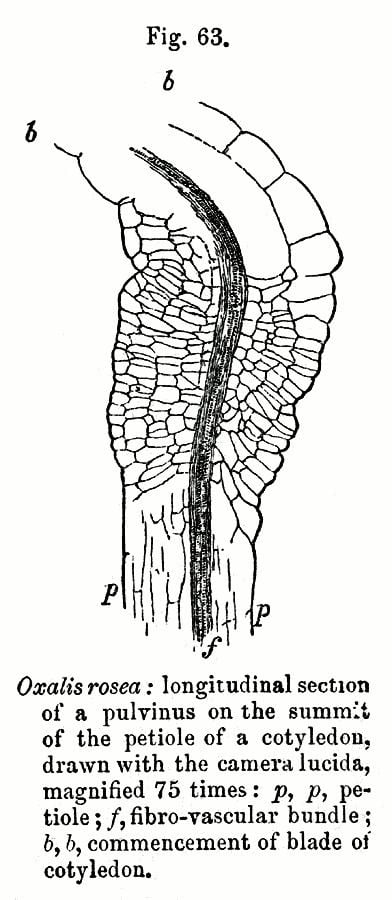 | ||
A pulvinus (pl. pulvini) is a joint-like thickening at the base of a plant leaf or leaflet that facilitates growth-independent (nyctinastic and thigmonastic) movement. Pulvini are common in members of the bean family Fabaceae (Leguminosae) and the prayer plant family Marantaceae.
Pulvini may be present at the base or apex of the petiole or where the leaflets of a compound leaf are inserted into the rachis. They consist of a core of vascular tissue within a flexible, bulky cylinder of thin-walled parenchyma cells. A pulvinus is also sometimes called a geniculum.
Pulvinar movement is caused by changes in turgor pressure leading to a contraction or expansion of the parenchyma tissue. The response is initiated when sucrose is unloaded from the phloem into the apoplast. The increased sugar concentration in the apoplast decreases the water potential and triggers the efflux of potassium ions from the surrounding cells. This is followed by an efflux of water, resulting in a sudden change of turgor pressure in the cells of the pulvinus. The process is similar to the mechanism of stomatal closure.
ดูเป็นตัวอย่าง (230826492+40285+39_<6|<_<3747*<+38&+#7&8#9&+9~=+3==91+&0=%9=39394859025)+(309275937<^>[77+&7@8-&82947&-29590%8303=92072959401)
